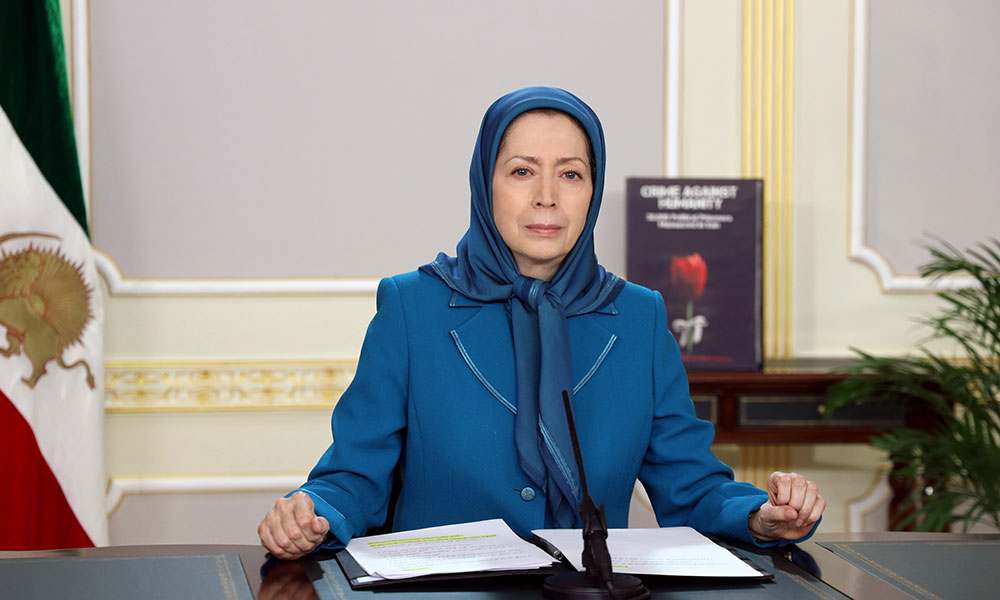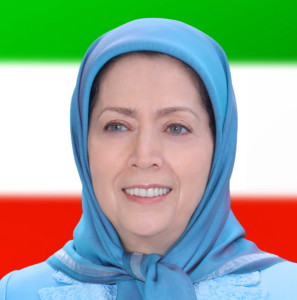Official UN experts describe the 1988 massacre as a “crime against humanity”

Maryam Rajavi: The great day of justice for the Iranian people will arrive. Mullahs, IRGC, and intelligence agents cannot escape their fate
Compatriots,
After 32 years, official experts of the United Nations have described the 1988 massacre of political prisoners in Iran as a “crime against humanity.”
The experts have called for a comprehensive and independent investigation. This is the outcome of the blood of martyrs and a great victory for the MEK, the Iranian Resistance and the Iranian people on their path to seeking justice.
Yes, the justice movement is bearing fruit on the international front. The era of silence and ignoring of the clerical regime’s vast crimes is over.
The letter and official notice by seven official rapporteurs of the United Nations to the clerical regime paves the way for an international investigation to shed light on the matter. It also calls for the trial of those involved in committing the crimes.
This is a great blow to the bloodthirsty regime whose essence and survival has been defined by the 1988 massacre. Many of the regime’s senior officials like Ebrahim Raisi, the head of the judiciary, have risen the ranks after committing this heinous crime.
The UN experts’ calls also prevents those inside and outside of the regime who are dreaming about the failed policy of appeasement.
Khomeini’s decree for the massacre followed the ceasefire in the Iran-Iraq War
32 years ago, the National Liberation Army forced Khomeini to end the Iran-Iraq War. Khomeini was forced to accept a ceasefire after conducting an eight-year unpatriotic war against Iraq. His slogan was “liberating Jerusalem through Karbala.” After this ceasefire, Khomeini implemented the massacre of MEK which he had prepared earlier. In his despicable decree, Khomeini had written: “The MEK have never believed in Islam and everything they say is based on deception and hypocrisy. … In view of the fact that they are Mohareb [enemies of God] and in view of their classic battles in the north, west and south of country, … and in view of their relations with global arrogance and their damages since the inception of the Islamic Republic system to now, those who are insistent on their support for the MEK in prisons across the country are enemies of God and condemned to death.”
In a hand-written letter Khomeini said: “Anyone who at any stage is insistent on their support for the MEK is condemned to death. Destroy the enemies of Islam immediately.”
After the massacre of the MEK, the next targets were other political groups. But it was still conducted in silence and in secret. The ruling mullahs hid the names of victims and the places of their burial. Their accomplices inside the country exercised silence. Turning a blind eye to this crime was a fundamental element of the appeasement policy internationally. In this respect, UN experts remind us that: In December 1988, the UN General Assembly expressed its grave concern about the new wave of execution of political prisoners from July to September 1988. Even so, the issue was not referred to the UN Security Council. The UN General Assembly did not follow up on the resolution and the Human Rights Commission did not act. The experts say that the silence emboldened the regime to continue to hide the fate of the victims and to continue to this day the strategy of diversion and denial.
This silence forced the complete censorship of the MEK’s calls for justice, which began from the first weeks of the massacre. The numerous demands of the NCRI president from the UN Secretary General to attend to the issue remain unanswered. The outcome of the efforts of the rapporteur who later visited Iran was more treachery and stabbing human rights in the back. Global policies remained pinned on the hopes of moderation inside the regime through regime president Ali Akbar Hashemi Rafsanjani.
In 1995, when after a 7-year campaign by the Iranian Resistance, the regime accepted a visit by the UN special rapporteur, Massoud Rajavi demanded answers to 15 fundamental questions. Among them were the number of the victims of the massacre, the places of their burial, and addressing the fact that the families were uninformed about mass graves. Still, no answers were received.
Outcome of the sacrifice of martyrs
But today, the blood of those slain in the massacre has gripped the regime. Now, it is the UN experts who are asking the same questions from the mullahs.
As Massoud Rajavi has said: The blood of the MEK, who have an ideal, an organization and an undeniable identity, and who comprise 90% of those massacred, will not be wasted.
During the past three decades, the regime and its agents, who have faced defeat in hiding the massacre of 30,000 political prisoners or tried to downplay the extent of the crime, have coordinated their efforts through the intelligence ministry. They have tried to confiscate the justice movement and the MEK supporters through despicable shows and influence operations. They have tried to blame the MEK and the Eternal Light Operation for the massacre in order to whitewash the regime’s crimes. But reports by UN sources and human rights organizations, particularly Amnesty International, and the global campaign for justice, have debunked those lies. Additionally, testimonies by many prisoners who witnessed preparations for the massacre months before leave no doubt about the deceptions. For the first time this summer, the US State Department acknowledged that July 19 (a day after the ceasefire agreement) is the anniversary of death commissions in Iran in 1988. Contrary to what the regime and its agents say, the massacre was planned and implemented before the launch of Operation Eternal Light.
Iranian people’s demand: the dossier of 1988 massacre must be referred to the UN Security Council
The Iranian people’s and the Iranian Resistance’s demand, and the demand of the loved ones of the victims, is to refer the case of this crime to the UN Security Council and an international tribunal.
The impunity of Khamenei and other regime officials must end. Khamenei and his president Hassan Rouhani, the judiciary chief Raisi, senior officials of the intelligence ministry, IRGC commanders, and many other officials and agents of this regime have all been involved in the massacre of political prisoners in 1988 and all the executions in the 1980s. They must face justice for committing crimes against humanity.
As indicated in the recent letter by the seven UN experts, we ask the Human Rights Council to conduct an international investigation regarding this crime. This would be the first step to end the impunity for the officials, agents and those who ordered the largest political crime of the century.
We ask all countries to support the referral of the 1988 massacre dossier to the UN Security Council.
These days coincide with the Human Rights Day, which calls for an end to the oppression and injustice against human beings. We, therefore, pay homage to all those who have fought for the protection of human rights in the struggle against tyranny.
On behalf of the Iranian people, I call on all human rights defenders to protect the suppressed human rights of the Iranian people.
The Justice Movement will continue until all of the details of this great crime, particularly the list of all the victims and places of burial, are determined. It will continue until Khamenei and all of those involved in this massacre face justice.
The great day of justice for the Iranian people will arrive. The mullahs, the IRGC, and intelligence agents cannot escape their fate.
Hail to the martyrs
Hail to freedom

